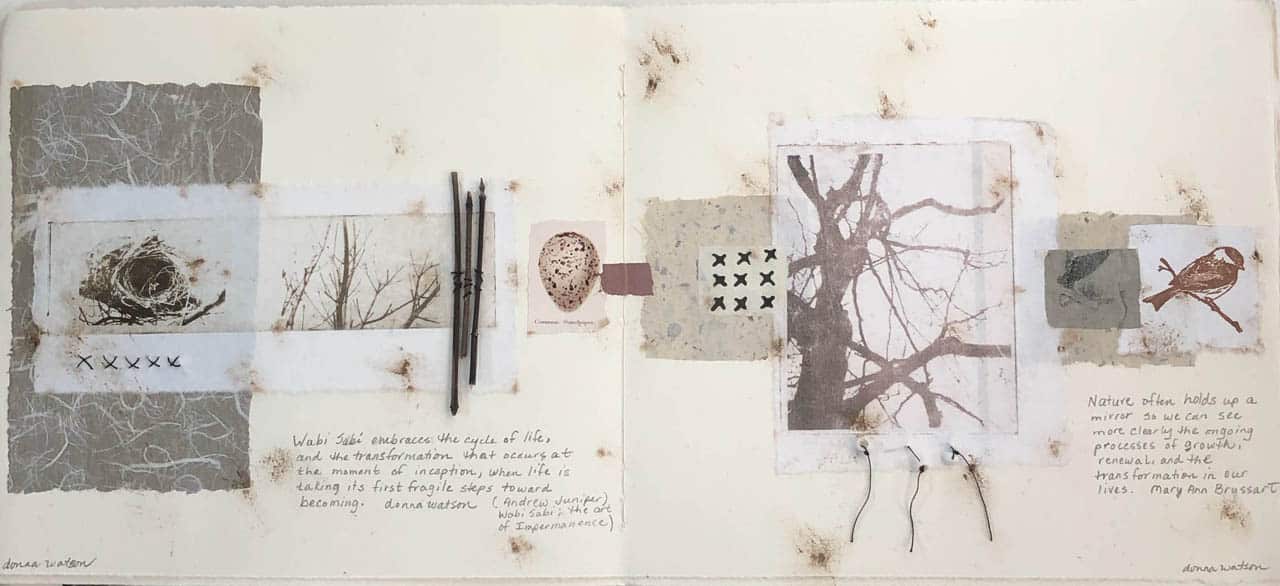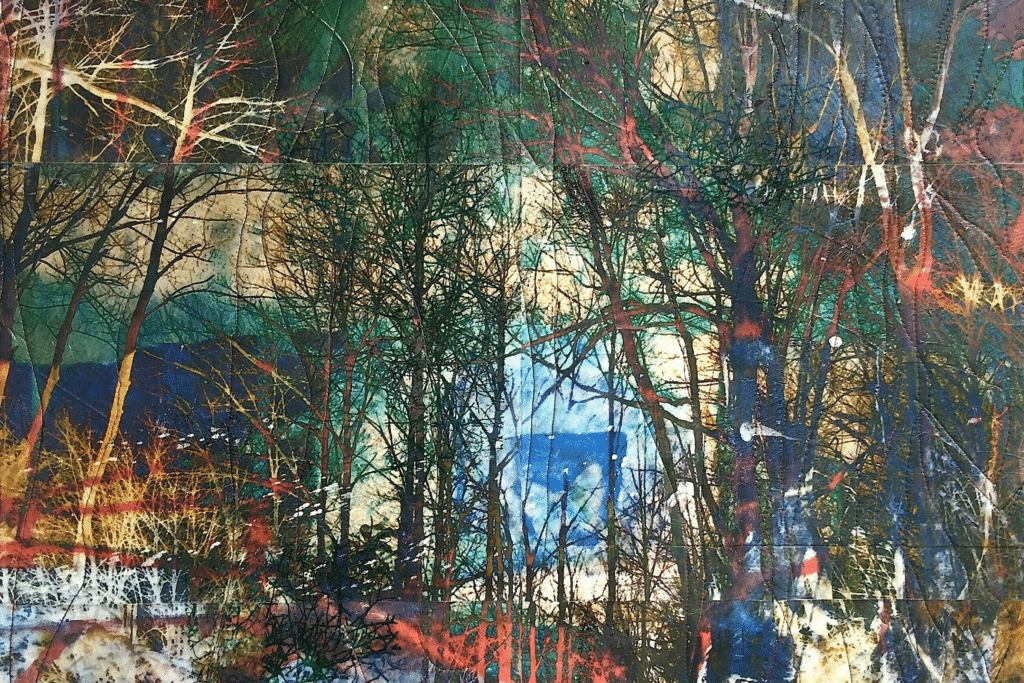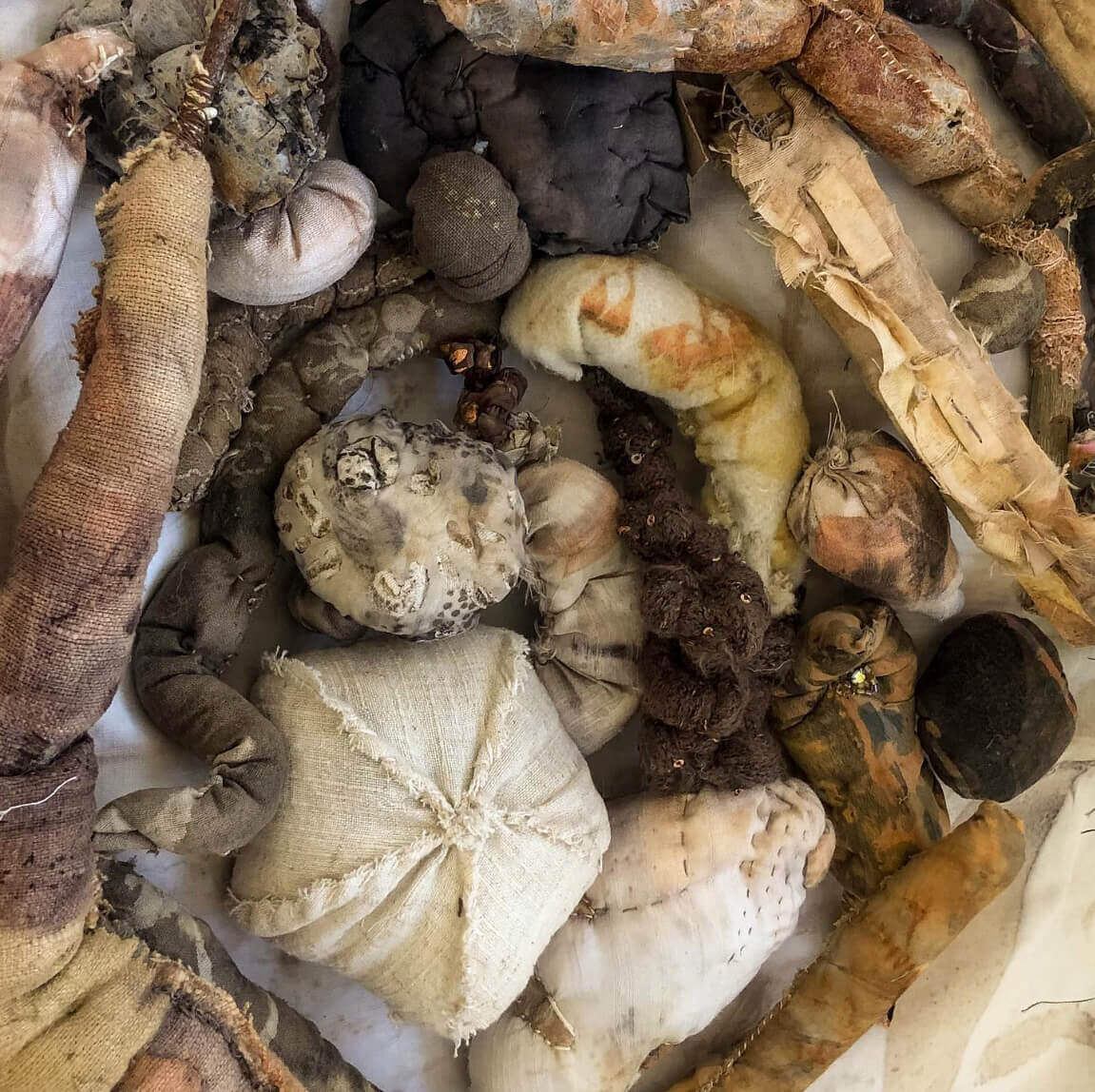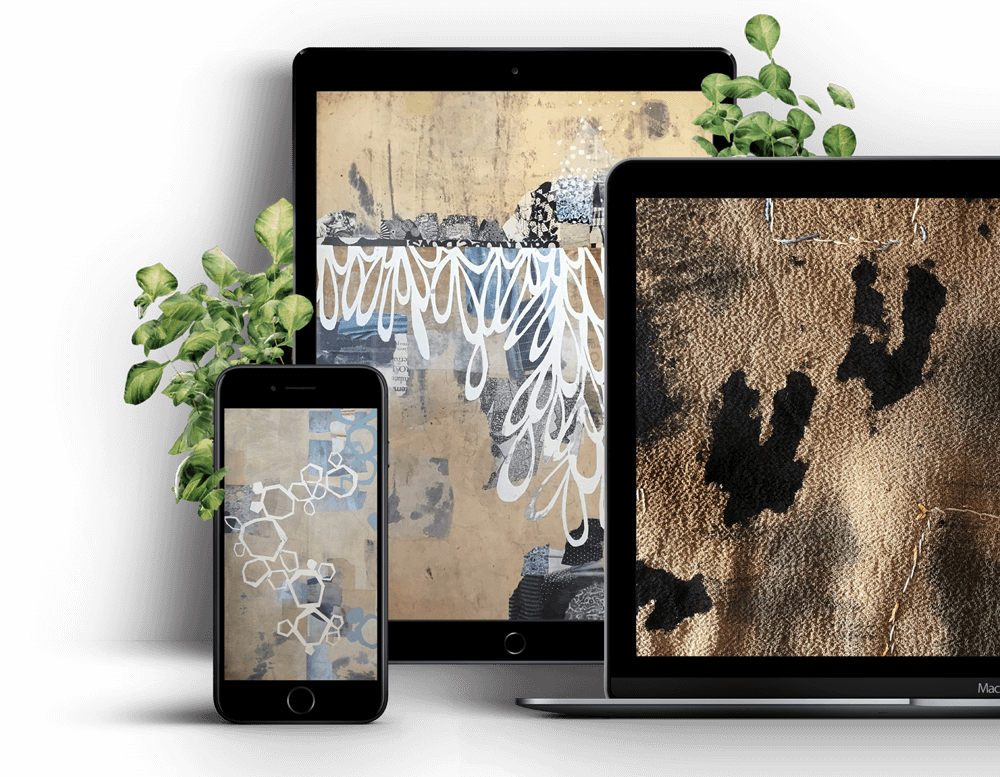Rosie James: Fluffy Threads and Wheelie Cases
Fibre Arts Take Two enjoyed a wonderful chat with artist Rosie James about her art, thread, stitching, wit, wheelie cases and more.
This Friday Feature Artist Interview can be found at the bottom of this page.
Rosie James is a renowned textile artist whose work captures the essence of human nature in a unique and profound way.
Rosie’s journey into the world of art is as fascinating as her creations. Starting her career as a radiographer, she made the bold shift at the age of 30, diving into the world of art and textiles. Over the past 25 years, she has honed her craft, exploring the nuances of human interactions and behaviours through her intricate stitch work. Her approach to art is both intriguing and inspiring. Using a sewing machine as her primary tool, Rosie skillfully transforms photographs into vivid textile pieces that tell stories and narratives, inviting us to pause and reflect on the world around us.
Among other things, Rosie talked to Fibre Arts Take Two about her art, threads, stitching, wit and wheelie bags.
Starting stitching
After leaving an unsatisfactory career in radiology and pursuing multiple artistic endeavours, Rosie settled on stitching and printmaking, “I started out just doing black line drawings on white backgrounds,” she says, “and didn’t do any printing at all.”
Rosie took inspiration from artist Albrecht Dürer, “I was trying to replicate his exact marks using the sewing machine,” she says, “Of course, the sewing machine just does a straight line. Basically, the stitch, the thread that you use, if you want to change the thickness of it, you can’t really do that much. It was quite interesting to see the limitations of the sewing machine as opposed to when you’re using a pen and ink.
Doing that enabled me to compare the marks he made to the ones I could make on the same machine. I was obsessed with the drawing bit. But then, because I’ve done printing in my design degree, and I absolutely love screen printing, I really wanted to get that in there somehow. So I started off adding bits of print to the stitched piece.”

Introducing backgrounds
When Rosie started out, she was only stitching figures, “They had no background in the early days,” she says, “there were just these figures.” Soon, Rosie realised she could incorporate her love of printing into her stitched pieces, “I started putting in the background,” she says, “I printed the background, then stitched the figures, and I started bringing in a lot more colour. When I first did it, it was just black and white. I brought in a lot more colour and the printed background, and I really liked that juxtaposition. You can see the stitch bits next to the printed bits and the stitch line next to the printed line. It just allows the stitch bits to stand out a bit.”
The pull of people
Rosie still feels a strong pull to include figures in her art, “there’s something about people,” she says, “And I like photographing, rather than actually going out and drawing one because you have to be very quick, and you can’t capture everything. I like all the details. I like what they’re wearing. Glasses, everything. So I like people that have got a lot of stuff. If somebody is just standing there in their swimming trunks, that doesn’t interest me as much as drawing somebody with lots of clothes, buttons, and pockets.”
Fluffy threads
Rosie’s work includes using a lot of thread, “My favourite threads are the really cheap ones that are slightly furry, certainly fluffy,” she says, “So they’re not the best. The really good threads, especially for machine embroidery, are very slinky; I don’t like them, they’re too slinky. When they hang, they hang loosely. What I like about the cheap threads is they’re slightly furry, which means that the loose threads slightly adhere to the canvas background or whatever you’re sewing on. Whereas with the other embroidery threads, they don’t because they’re very slithery. Also, I’ve got many threads I’ve just acquired. People give you stuff, so I’ve got a lot of threads. I don’t even know where they are or come from, but I use them. I use them all.”

COVID creativity
Like many artists, Rosie found a way to make lockdown time during COVID a little more creative, “I was stuck at home, thinking, ‘What should I do now?’” She says, “So I was on Instagram, and I thought, ‘I know, I’ll get people to send me pictures of themselves, and I’ll just stitch them, just for a bit of fun.’ So I put the call out and said, ‘Send me a photograph of yourself, whatever you’re doing in your front room, or whatever you’re doing, send me a picture of you doing it, and I’ll have a go at stitching it, and I’ll put them up here.’ So people sent me their photographs. It was absolutely brilliant. There were some people with boxes on their hands. I love this one with the rabbit. It was just really good fun. So I basically stitched them, and I thought. ‘I’ll just do them all the same size. Now that’s a good use of threads.’ And then I thought, ‘Well, I’ll stitch them all together to make a large piece.’ And then I thought, ‘It’ll be a bit like Zoom. I’ll just make it like a massive Zoom session.’ And I’m the one in the middle. I’m talking, so I’ve got this green line around me.”
Of course, even though it didn’t occur to Rosie at the time, people wanted to own the portraits of themselves that Rosie was creating, “When I started doing them,” says Rosie, “people were saying, ‘Oh, I love it. Can I have it? Can I buy it?’ So I started selling them, which is fantastic. And so then I thought, ‘Oh, well, how am I going to make this massive piece if everybody’s buying them?’. So I started making two of them a lot so people would buy one and then I make another one to go in the actual piece. At some point, I thought, ‘I’ll do 100 for this big piece, and then I’ll just stop.’ So that’s what I did. I got the 100 ready for the big panel; I stopped at that point and then sewed them all together and gave them the black background.”
Wit and wild
Rosie says that she prefers work with a sense of wit. She incorporates that into her work, “I was thinking about how, when you’re stitching from a photograph, you’re stitching somebody, you don’t need to put them in the same place, you can put them somewhere else, you can do what you like with these people.” she says, “I did become a bit obsessed with wheelie cases and people with them, so I took a lot of pictures of people around stations. And then, when I was doing the Wild project, I was thinking about the idea of the ways in which we think we’re wild, but we’re not really, because we can’t go anywhere without our stuff. We can’t go into a forest or anything without our bags. We need our wheelie cases. So I took people out of the station and put them in the forest.”

About the artist
Rosie James is an artist working primarily in textiles. Her work explores the use of the sewing machine as a tool for drawing. Her focus falls mainly on people and the kinds of crowds that form when people gather. She is looking for the individual within the group. Her work also uses the stitched line to create drawings that explore the world of stitch, textiles, fashion, craft, etc. The ways in which stitching and textiles figure in our everyday lives are a continuing fascination. Rosie uses screen printing, machine stitching, and applique to create layers of imagery. Recently, she has become interested in the ways in which a line is created on the sewing machine and how lines are everywhere we look. These lines link us together.
Follow Rosie on Instagram
Join Our Newsletter
OUR YOUTUBE CHANNEL
View our interviews and more on our Youtube channel!
OUR FACEBOOK GROUP
Join our Community and stay updated with our upcoming announcements!



